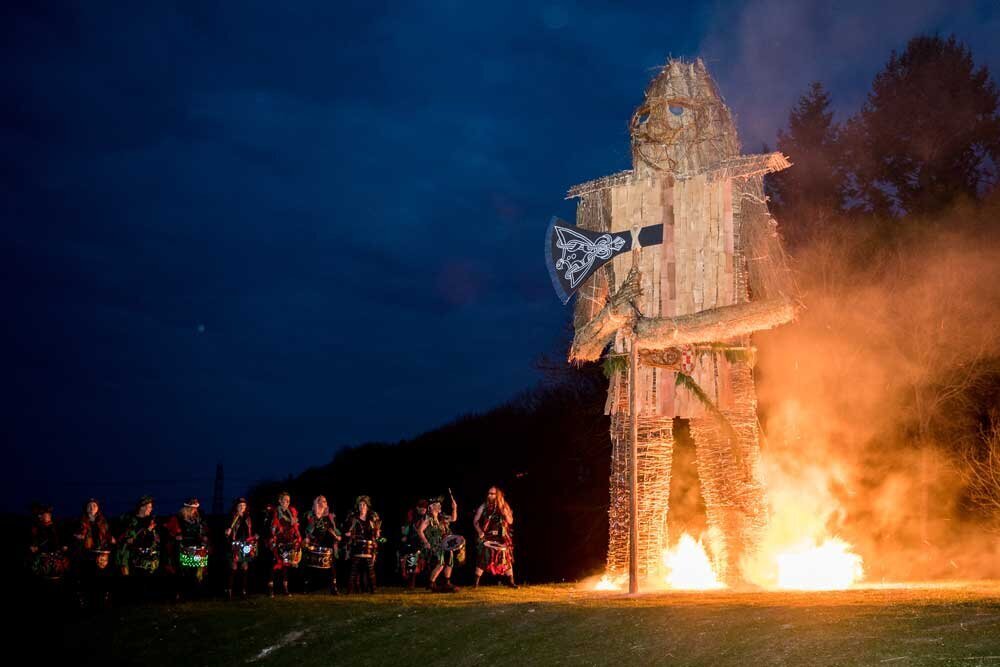Today is the full moon marking the middle of the month sacred to the goddess of spring Ēostre. Tulips and hyacinths abound, and the young god begins his rise.

The Festival of Flowers & the Wickerman
As the chill of winter recedes and the promise of spring emerges, we celebrate the ongoing unfoldment of spring. The Festival of Flowers, known also as Beltane, is a vibrant festival marking the halfway point between the spring equinox and the summer solstice. The sabbat, traditionally observed on May 1st in the Northern Hemisphere, is a time of fertility, growth, and the awakening of the earth after its long slumber. Among the various customs and rituals associated with season rites, one of the most intriguing is the tradition of the Wickerman.
The Wickerman, a towering figure made of branches, straw, or wicker, holds a significant place in Celtic and neopagan celebrations. While the origins of the ritual are shrouded in the mists of time, its symbolism and practices continue to captivate and inspire.
At its core, the Wickerman represents the union of life and death, growth and decay, creation and destruction – themes deeply intertwined with the cycles of nature. As the earth bursts forth with new life during the spring season, the Wickerman serves as a reminder of the inevitable cycles of renewal and regeneration. It is a symbol of sacrifice, both literal and metaphorical, as communities come together to honor the fertility of the land and ensure a bountiful harvest in the months ahead.
The construction of the Wickerman is a communal effort, with each member of the community contributing materials and intentions for the ritual. As the structure takes shape, prayers are offered, songs are sung, and blessings are bestowed upon the effigy. It becomes not just a physical representation of the earth’s bounty, but a vessel for the hopes, dreams, and aspirations of those who partake in the ritual.
On the night of Beltane, the Wickerman is ceremonially set ablaze, engulfed in flames that reach toward the heavens. The fire symbolizes purification, transformation, and the release of that which no longer serves us. As the flames consume the Wickerman, participants are invited to release their fears, regrets, and burdens, allowing them to be transformed into ashes that will nourish the soil and facilitate new growth.
While the image of the burning Wickerman may evoke feelings of unease or apprehension, it’s essential to understand that the ritual is not about destruction for its own sake. Instead, it is a celebration of the cyclical nature of existence – a reminder that death is not the end but a necessary part of the journey toward rebirth and renewal.
In a world that often feels disconnected from the rhythms of nature, the tradition of the Wickerman offers a potent reminder of our inherent connection to the earth and all its cycles. It encourages us to embrace the inevitability of change, to honor the cycles of life and death, and to find solace in the knowledge that, like the phoenix rising from the ashes, we too can emerge renewed and transformed.
As we gather around the fires of the spring celebrations, let us reflect on the wisdom of our ancestors and the rites and customs that connect us to the turning of the year. And as the flames of the Wickerman light up the night sky, let us be reminded of the eternal dance of life, death, and rebirth that binds us all together in a sacred web.
